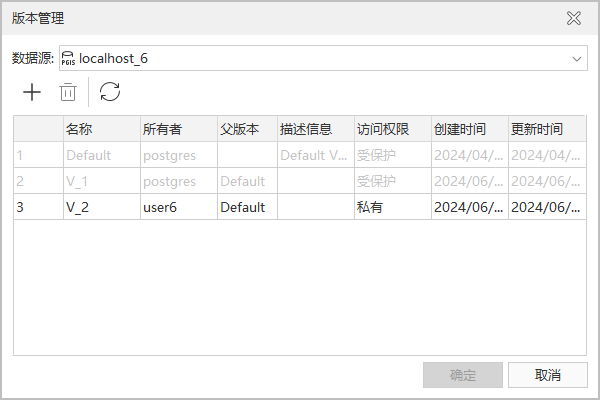Feature Description
The version represents a snapshot of the entire datasource at a particular point in time. A version of the data contains all datasets under the datasource, including both versioned and unversioned data. The default version is the base version of the datasource, and all subversions are derived from the default version. Currently, we only support creating subversions based on the default version.
Version management is used to create and delete subversions, allowing different datasets to be distributed to multiple editors for modification. Each version of the data is edited independently, without affecting others. The permissions for managing data versions by different database users are as follows:
| User type | View | Create version | Modify version permissions |
| Superuser | All versions. | Supports creation. | Supports modifying permissions for all versions. |
| Regular user |
|
Must have datasource creation permissions. |
Only supports modifying permissions for versions you created. |
Steps
-
In the Data tab, under the Manage Data Version group, click the Version Control button.
-
In the Version Management dialog, manage versions using the Add, Delete, and Refresh buttons in the toolbar.
-
You can modify version information by double-clicking on the cells in the Name or Description columns. For example, change the description of version "V_1" to "Edited by colleague Zhang San".
-
In the Access Permission column, you can modify the access permissions of the version, including Public, Protected, and Private permissions.
-
Public: Users with dataset edit permissions can read and write the dataset, while other users can only read it.
-
Protected: Superusers and the version creator can read and write data, while other users can only read it.
-
Private: Superusers and the version creator can read and write data, while other users cannot see it.
-
-
When there is a change in the data content of a version, the Update Time list will also change.

Related Topics
Version Control Basic Vocabulary



